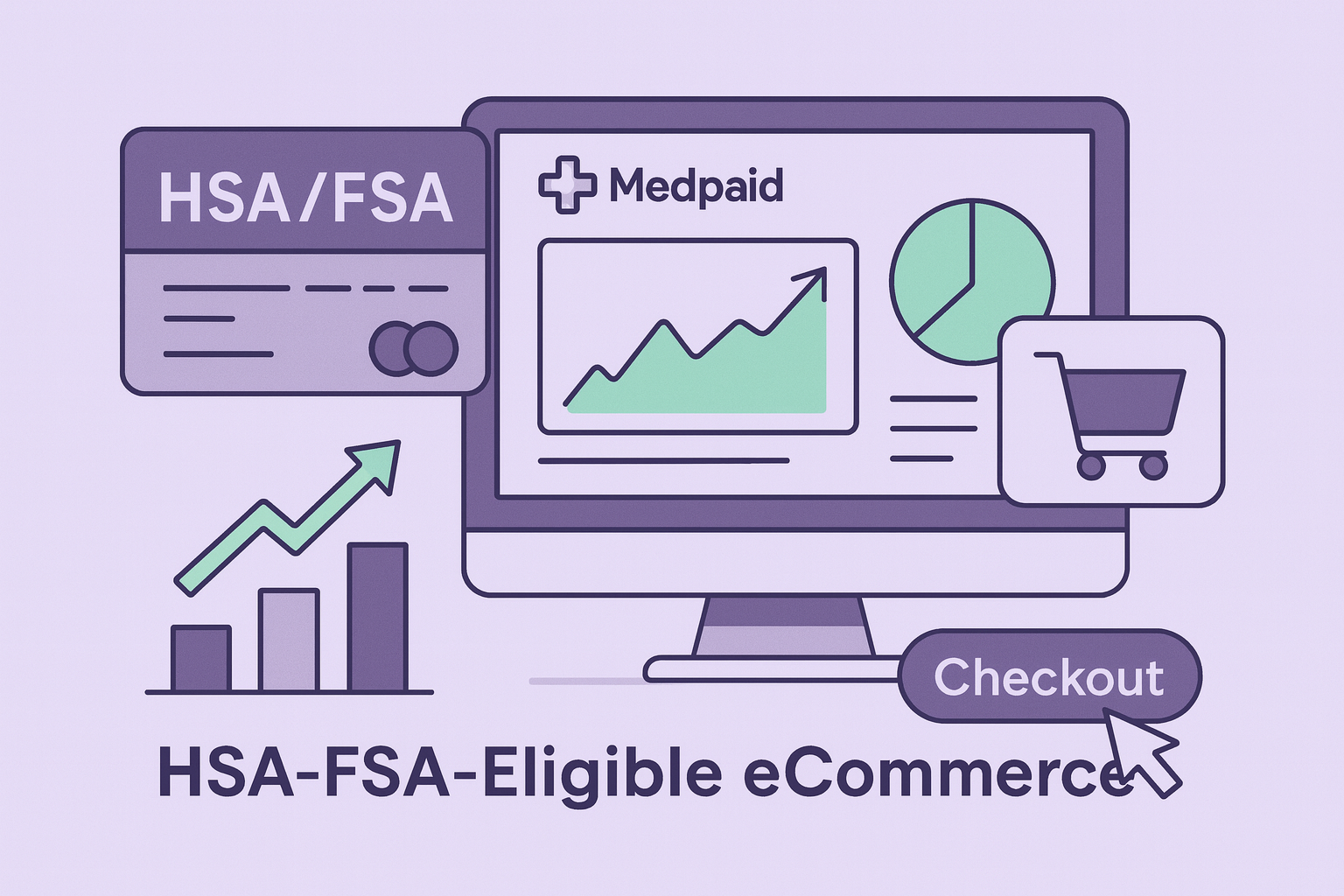If you sell wellness, recovery, performance, or health-adjacent products, there’s a high chance your customers are sitting on money they want to spend with you—but can’t.
That money lives inside HSA (Health Savings Account) and FSA (Flexible Spending Account) plans. These are tax-advantaged accounts people use to pay for qualified medical expenses, as defined by the IRS and health coverage rules. You can see the official definitions on HealthCare.gov’s HSA glossary and FSA overview.
Most online stores never unlock that channel, not because their products aren’t eligible, but because eligibility and payments are painful.
Medpaid exists to fix that.
Why HSA/FSA Dollars Are So Powerful for eCommerce
In the U.S., tens of millions of people contribute pre-tax dollars to HSAs and FSAs every year. These funds are specifically earmarked for qualified medical expenses, which are defined in IRS guidance like Publication 502: Medical and Dental Expenses and Publication 969: Health Savings Accounts and Other Tax-Favored Health Plans.
That creates a unique behavior pattern:
- Shoppers would rather use HSA/FSA money than post-tax cash
- They actively search for “HSA/FSA eligible” products
- If they’re unsure something qualifies, they often delay or abandon the purchase
For merchants, that uncertainty shows up as cart abandonment and lower conversion, not a clear “HSA/FSA problem.”
Where Revenue Quietly Leaks Today
Without HSA/FSA infrastructure, merchants run into:
- Customers asking, “Can I use my HSA/FSA card for this?”
- Declined HSA/FSA card payments at checkout
- Manual back-and-forth about eligibility, receipts, and documentation
- Missed opportunities when shoppers choose an “HSA-friendly” competitor
You might even be selling products that clearly fit IRS-qualified categories—think orthopedic support, recovery tools, eligible OTC items, or medically-oriented wellness products—but your store doesn’t present them as such.
The Modern Solution: HSA/FSA SaaS for Shopify, WooCommerce, BigCommerce, and Custom Stores
This is where a purpose-built HSA/FSA SaaS like Medpaid comes in.
Medpaid offers a two-part platform:
-
Eligibility intelligence
- Product research and classification against IRS guidance and plan rules
- Centralized knowledge of what typically qualifies for HSA/FSA spending
- Support for grey-area items that may require a Letter of Medical Necessity (LMN), aligned with how administrators handle eligibility (see explanations from resources like FSA Store’s LMN breakdown)
-
Checkout & reimbursement widget
- “Pay with HSA/FSA” option right inside your checkout
- Post-purchase reimbursement flows when card rails don’t support the transaction
- Clean, itemized receipts that align with what HSA/FSA administrators typically expect
Because the platform plugs into Shopify, BigCommerce, WooCommerce, and custom integrations, you don’t have to rebuild your stack to accept these payments.
What This Means for Growth and KPIs
Turning on HSA/FSA rails with Medpaid can:
- Capture orders that would otherwise fail due to card declines or eligibility confusion
- Reduce pre-purchase and post-purchase support tickets about “Will this qualify?”
- Improve conversion rate on high-intent, health-motivated traffic
- Help your brand appear in long-tail discovery like “HSA eligible recovery kit” or “FSA eligible wellness bundles”
When your site clearly labels items as HSA/FSA-eligible (backed by real eligibility logic, not guesswork), shoppers feel confident spending funds that are literally set aside for products like yours.
Why Now?
Regulatory guidance around HSAs and FSAs continues to evolve, and awareness is growing. You can track official updates via IRS Publication 969 and consumer-facing resources like HealthCare.gov’s HSA/FSA coverage overview.
Brands that move early will own the search, customer trust, and category narrative.
If you’re running on Shopify, WooCommerce, BigCommerce, or a custom stack and want to turn HSA/FSA into a real revenue channel, Medpaid is built for exactly that.


















